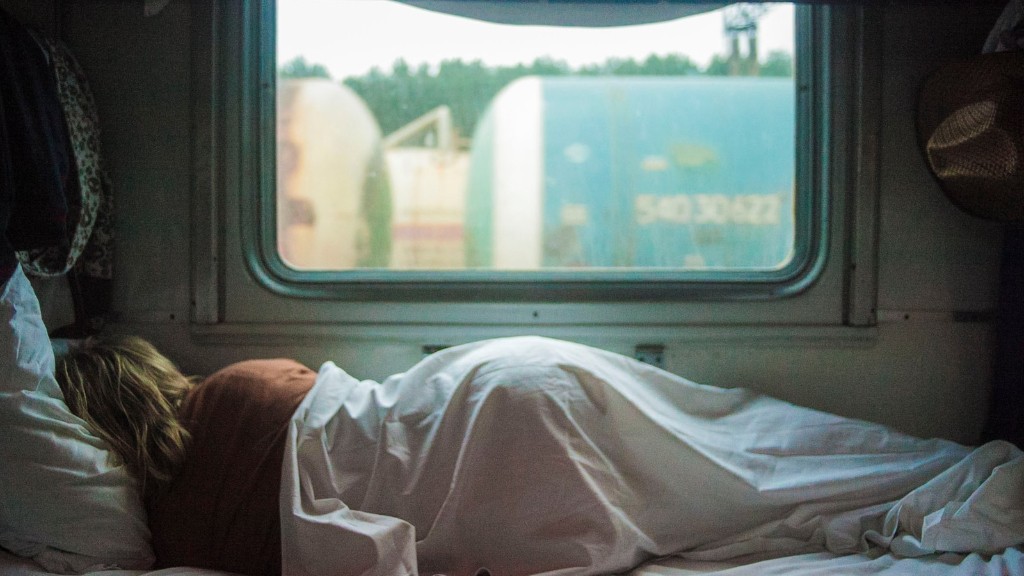Most dreams occur during a state of sleep called REM (rapid eye movement). Dreams usually last between five and 20 minutes.
The majority of dreams occur during the Rapid Eye Movement (REM) stage of sleep.
At what stage do we dream the most?
REM sleep is a type of sleep that is characterized by rapid eye movements, increased brain activity, and dream recall. Most of your dreaming occurs during REM sleep, although some dreams can also occur during non-REM sleep. Your arm and leg muscles become temporarily paralyzed during REM sleep, which prevents you from acting out your dreams. As you age, you sleep less of your time in REM sleep.
REM sleep is a period of sleep during which Rapid Eye Movement (REM) occurs. It is usually characterized by increased brain activity and vivid dreams. Most people enter REM sleep about 90 minutes after falling asleep.
What time of night do you start dreaming
REM sleep is a period of sleep during which you dream. It generally begins about an hour to 90 minutes after you fall asleep. You may not remember all of your dreams, but you may have vivid dreams during REM sleep.
It is unusual for dreams to occur soon after falling asleep since the first cycle of REM sleep is usually around 90 minutes after falling asleep. They then occur at approximately 90 minute intervals during sleep and are most complex and prolonged in the later REM sleep episodes towards the end of the night.
Does dreaming mean good sleep?
Dreaming is a normal part of healthy sleep. Good sleep has been connected to better cognitive function and emotional health, and studies have also linked dreams to effective thinking, memory, and emotional processing. Dreams may help us process difficult life events, sort through complicated emotions, and access our creative side. They can also be a fun way to explore different aspects of our personalities. If you’re having difficulty sleeping, talk to your doctor about ways to improve your sleep hygiene.
Dreaming sleep is a deep stage of sleep with intense brain activity in the forebrain and midbrain. This stage of sleep is important for memory consolidation and creative problem solving.
Which sleep is better with dream or without dreams?
But what if we told you that one of the best things you can do for a good night’s sleep may be entirely within your control? It turns out, paying attention to how you sleep, rather than how much you sleep, may be the key to getting the most restful sleep possible.
Sleep without dreams is often referred to as “quiet sleep” or “Stage N3 sleep,” and it’s the most restorative stage of the sleep cycle.During quiet sleep, your body temperature drops and your brainwave activity slows, which allows your body to enter a deep state of relaxation. This is when your body does the majority of its repair and restoration work, so it’s no wonder that a good night’s sleep is essential for good health.
While some people naturally tend to sleep more deeply than others, there are a few things you can do to encourage quiet sleep. Creating a pre-sleep routine can help signal to your body that it’s time to wind down for the night, and avoid caffeine and alcohol before bedtime, as they can disrupt sleep.
If you’re struggling to get enough restful sleep, talk to your doctor about what else might be causing your sleep problems.
It is important to get enough sleep every day in order to feel rested and refreshed. An average sleep cycle lasts about 90 minutes and consists of four stages: three non-rapid eye movement (NREM) stages and one rapid eye movement (REM) stage. Ideally, you need four to six cycles of sleep every 24 hours.
Is dreaming REM or deep sleep
REM sleep is a stage of sleep where you experience very vivid and realistic dreams. However, you can also dream during other stages of sleep, although those dreams are usually not as vivid or realistic.
There are a few factors that may contribute to vivid dreaming. One factor is fragmented sleep. This means that if you wake up during or right after REM sleep, you’re more likely to remember your dream more vividly. Another factor is sleep deprivation. A study found that participants deprived of REM sleep were more likely to have vivid dreams.
What are the 3 types of dreams?
Most people dream every night during REM sleep, though they may not remember their dreams. There are five main types of dreams: normal dreams, daydreams, lucid dreams, false awakening dreams, and nightmares.
Normal dreams are the most common type of dream, and usually occur during REM sleep. They are often based on recent events or concerns in your life. Daydreams are less vivid and realistic than normal dreams, and usually occur when you are daydreaming or daydreaming. Lucid dreams are more vivid and realistic than normal dreams, and usually occur when you are aware that you are dreaming. False awakening dreams are dreams in which you believe you have awoken from a previous dream, only to find yourself still dreaming. Nightmares are the most intense and vivid type of dream, and usually occur when you are experiencing stress or fear in your life.
Dream recall can be affected by a number of factors, including how recently you woke up, how much sleep you’ve had, and how vivid the dream was. If you remember your dream, it could be that you simply woke up during it, so it’s fresh in your mind, says Deborah Givan, MD, sleep specialist at Indiana University Health Methodist Hospital in Indianapolis. Or remembering could mean that you’re remembering the very last dream you had rather than the dream in full.
Is dreaming the last stage of sleep
The last two stage of non-REM sleep is called “deep sleep.” It’s hard to wake up from this stage of sleep. REM sleep happens about an hour to an hour and a half after falling asleep. REM sleep is when you tend to have vivid dreams.
Hypnagogia is the transitional state of consciousness between wakefulness and sleep. It’s the opposite of hypnopompia, which is the transitional state that occurs before you wake up. During hypnagogia, it’s common to experience involuntary and imagined experiences. These are referred to as hypnagogic hallucinations.
What are the 5 stages of sleep?
As we sleep, our bodies progress through five different stages of sleep. These are known as wake, N1, N2, N3, and REM. Stages N1 to N3 are considered non-rapid eye movement (NREM) sleep, with each stage a progressively deeper sleep. REM sleep is when our eyes move rapidly and we experience dreams.
REM stands for Rapid Eye Movement. It is the stage of sleep where we dream. Our brain activity is near waking levels, but our body remains “asleep” or paralyzed so we don’t act out our dreams while lying in bed. Sometimes our brain activity can scare us into waking up.
Do dreams improve memory
Dreaming about learning experiences may help improve memory performance, according to a new study. Researchers found that people who thought about a particular learning task before going to sleep recalled the task better after a night’s sleep than those who did not dream about it. This suggests that memory reactivation during sleep leads to consolidation and enhancement of postsleep memory performance. The findings could have implications for how to optimize sleep in terms of enhancing memory and learning.
There is still a lot unknown about dreaming, but we do know that some people rarely if ever recall their dreams. If you have trouble remembering dreams, you’re in good company. Most of us have 4 to 6 dreams a night, but we forget the vast majority of them.
Conclusion
Most dreams occur during Rapid Eye Movement (REM) sleep.
Most dreams occur during Rapid Eye Movement (REM) sleep. This is the sleep stage when you are most likely to dream.





